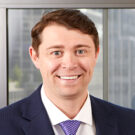Allianz SE, Europe’s biggest insurer, said second-quarter profit rose 11 percent, helped by higher earnings at the life and health insurance unit and lower natural disaster claims.
Net income increased to 1.76 billion euros ($2.35 billion) from 1.59 billion euros a year earlier, the Munich-based company said in a statement today. That compared with an average estimate of 1.55 billion euros of 10 analysts surveyed by Bloomberg.
Natural catastrophe claims declined to 172 million euros in the quarter from 549 million euros a year earlier. That helped increase operating profit at the property and casualty insurance unit, typically the most important division in terms of earnings, by 14 percent to 1.35 billion euros. Earnings at the life and health insurance unit advanced 47 percent to 984 million euros, boosted by an improved investment result.
Allianz said the upper end of its full-year operating profit target of 9.5 billion euros to 10.5 billion euros is “in reach” as half-year operating profit climbed 6.4 percent to 5.49 billion euros.
The company’s shares rose 0.9 percent to 122.2 euros at 9:27 a.m. in Frankfurt trading, paring losses this year to 6.2 percent and valuing the company at 55.7 billion euros. The Bloomberg Europe 500 Insurance Index fell 0.9 percent today.
Asset Management
Operating profit at the asset management business, which includes Pacific Investment Management Co. and Allianz Global Investors, fell 16 percent to 675 million euros in the quarter from a year earlier as management fees declined.
Total assets under management dropped 2.6 percent to 1.81 trillion euros, with third-party assets shrinking to 1.37 trillion euros from 1.46 trillion euros a year earlier.
Asset management performed “within expectations” as outflows at Pimco slowed and Allianz Global Investors recorded the highest quarterly third-party net inflows in its history, Allianz Chief Financial Officer Dieter Wemmer said.
Pimco saw third-party net outflows of 20.4 billion euros in the quarter after 21.7 billion euros in the first three months of the year. Outflows fell compared with the three previous quarters, Allianz said.
“Today’s results make us slightly more positive for life and asset management,” Thomas Seidl, an analyst at Sanford Bernstein in London, said in an e-mailed report to clients. “We think market concerns about Pimco will be fading in the second half.”
Total Return
Investors are closely watching developments at the asset management business, where Pimco’s main fund trails peers and struggles with a record streak of investor redemptions. Jay Ralph, the unit’s head, said in an interview in July that the insurer stands by Bill Gross, chief investment officer and manager of the Pimco Total Return Fund.
The fund had $830 million of net investor withdrawals in July, the smallest monthly decline since redemptions began in May 2013, according to Morningstar Inc. The fund’s total assets shrank to $223 billion from $293 billion last year.
Gross, 70, has come under scrutiny for his management style since the abrupt resignation in January of former CEO Mohamed El-Erian, whose departure was followed by reports of clashes between the two. El-Erian now works for Allianz as chief economic adviser and also writes a daily column for Bloomberg View, the opinion section of Bloomberg News.
Management Change
The insurer has a possible change in guard coming up at the end of the year, when the current contracts of six management board members expire. The contracts, which may also be extended, include that of Chief Executive Officer Michael Diekmann, 59, who has held the top job since 2003.
Allianz said in February that it expects the supervisory board, headed by Helmut Perlet, to decide on the composition of the future management board in October.
Shareholders also expect Allianz to give more details about its future payouts later this year. Allianzpaid 5.30 euros a share as dividend for 2013, or 40 percent of profit. It has said it may reconsider its policy of spending 20 percent of earnings each on internal and external growth and a shift of investments into “real assets,” while paying out the rest as dividend.





















 Progressive Gains as Drivers Shop Around for Auto Insurance—Again
Progressive Gains as Drivers Shop Around for Auto Insurance—Again  IBHS: Virginia Edges Florida Out of First Place in Building Code Adoption
IBHS: Virginia Edges Florida Out of First Place in Building Code Adoption  InsurTech Profile: Optimalex’s AI Tools ‘Co-Pilot’ Alongside Human Expertise
InsurTech Profile: Optimalex’s AI Tools ‘Co-Pilot’ Alongside Human Expertise  The Supreme Court Just Complicated Employer Diversity Initiatives
The Supreme Court Just Complicated Employer Diversity Initiatives 








